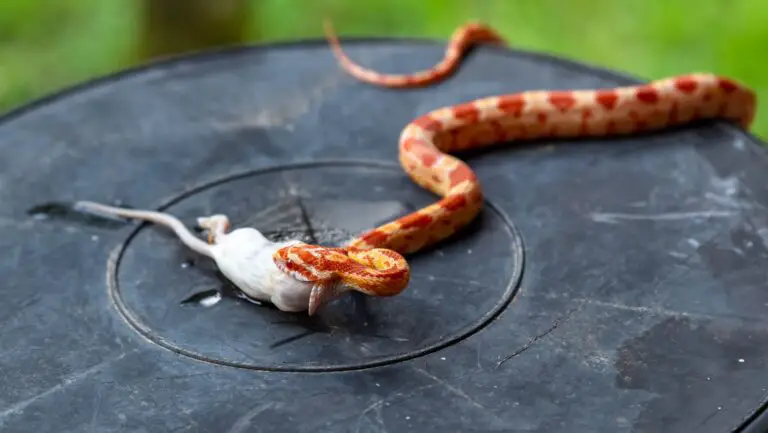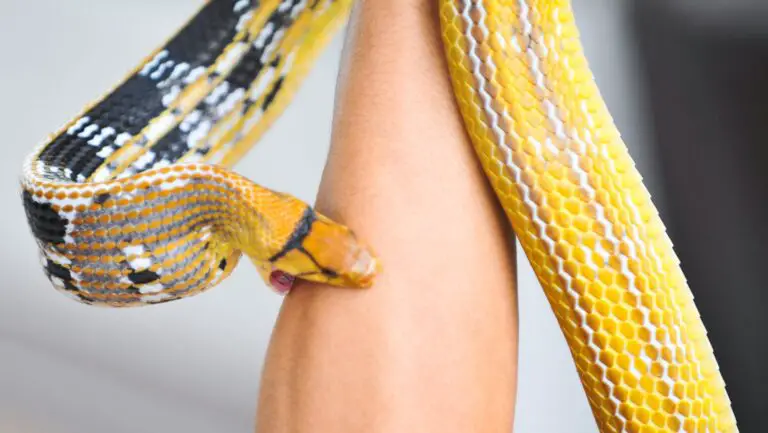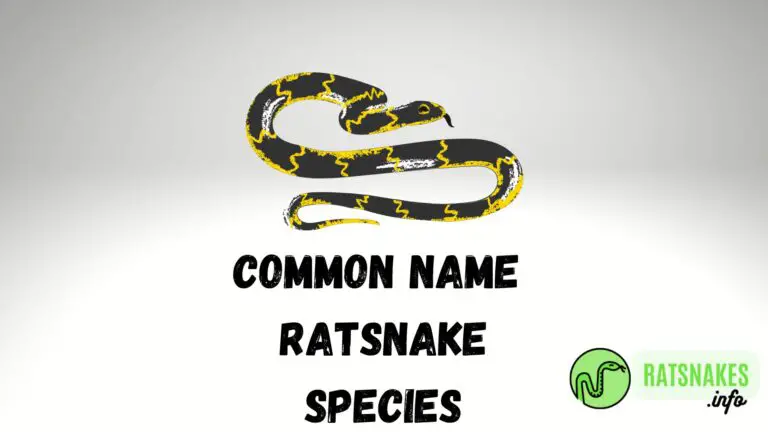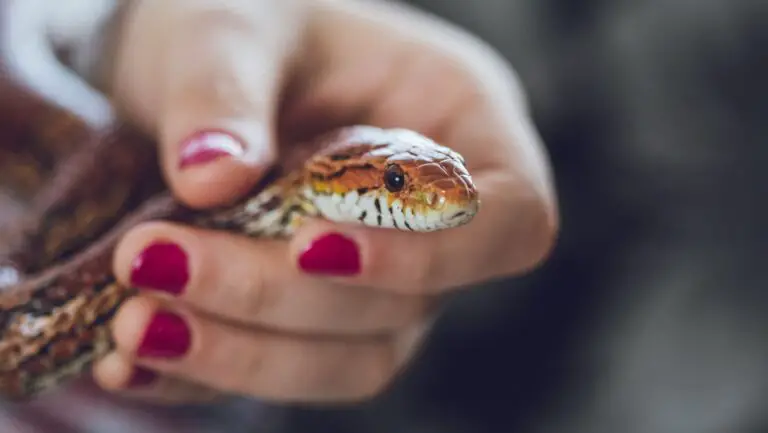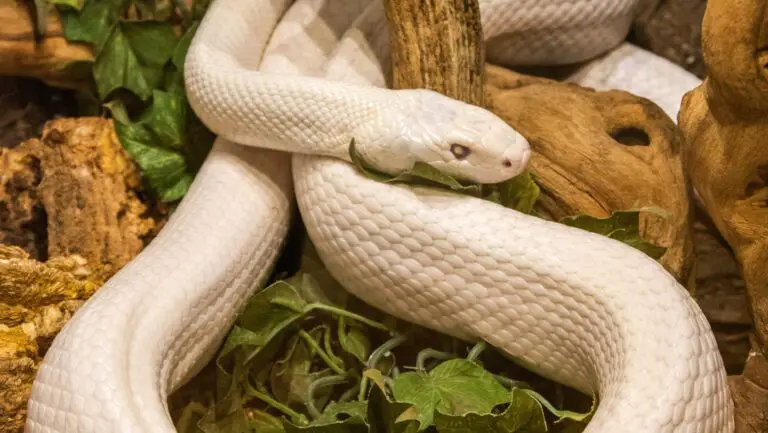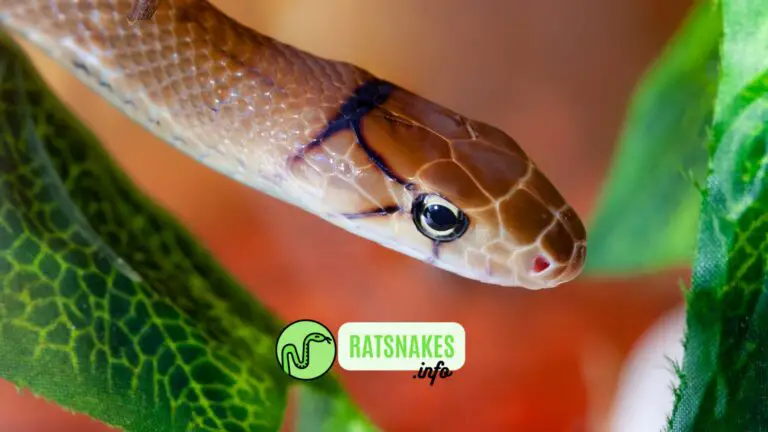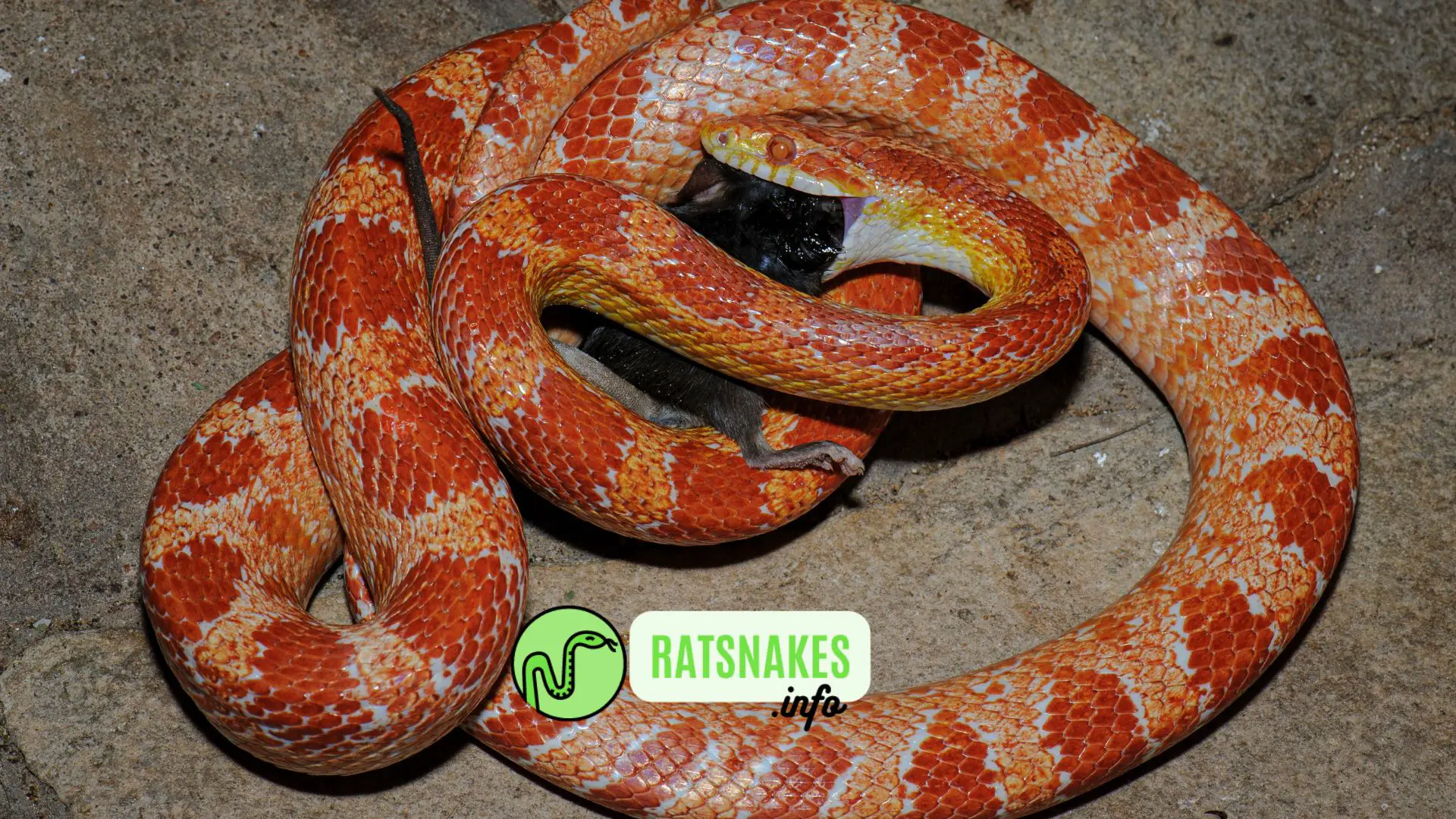
REASONS FOR NON-FEEDING
The species specific questions that should be asked here are of the standard fare; is the vivarium too hot or too cold? Is there an acceptable thermal gradient? Are there sufficient hides available for the snakes to grab that all important ‘me time’ or as it is often referred to in failing relationships, ‘space’? Is the substrate deep enough to allow effective burrowing? Is the vivarium placed in a busy room, providing excessive disturbance? Seclusion is preferred by many snakes regardless of species, without this provision, they may feel too stressed to consider eating a meal. There will always be some more queries like this that will have to be answered before you even consider using any of the following tricks to get that baby snake to feed. You’re the best person to answer these types of questions.
Do your research. Know their captive requirements before acquiring the new snakes. Also, ask the previous keeper how they fed, on what and how. To give yourself a better understanding of the species of snake being kept, familiarise yourself with what is known about its natural history. Often it’s this knowledge that when applied using a little commonsense, will give the solution to whatever quandary is presenting itself, this will apply to most problems and not just feeding related issues. Perhaps try feeding in the evening, most snakes tend to be more ‘clued’ in to look for food in the evening. Also, leaving the food overnight is a way of both convincing a nervous snake that it’s ok to eat its meal and to hedge your bets as to when that particular snake would prefer to eat its meal.
Sometimes however, it is just related to how the food is presented. Well at least it’s just related to the animals’ acceptance of whatever item you’re offering as food anyway. Most captive bred snakes will eat pretty much anything ‘rodent-wise’. Sometimes though, this general rule won’t apply and you might have to resort to some of the following tricks. Although it would be fairly unusual in species bred very often to have a high percentage of ‘non feeders’ within a litter or clutch, difficult feeders do exist; this is especially true of some hatchlings of some species bred less frequently.
OTHER FORMS OF ENTICEMENT
PSEUDO BRUMATION
It should also be mentioned that some snakes may require a ‘mini’ or ‘pseudo’ brumation period to kick in the urge to feed. Some snakes from temperate regions are born shortly before they need to shy away from harshly cold temperatures, so by cooling them down to their normal brumation temperature for whatever species is being discussed and providing them with a shortened period of cooling (2-4wks is usually enough), this can make them eager to eat on returning to their normal thermal gradient. This is a method that is often employed for European and Asiatic (not Tropical obviously) species. Young snakes don’t need to be cycled for breeding and shouldn’t need to be placed in brumation for an equivalent period that an adult would be expected to sit out the winter. The aim is to stimulate feeding not readying the animals for breeding. Some adults, depending on where the species originates from however may require a period of full brumation, as they simply would not be interested in food whether you plan to breed them or not. In such cases, keeping their metabolism ticking over at full tilt, will likely lead to excessive loss of weight or even starvation so brumation will be necessary.
As a side note, I have heard of momentary (half hour or so) exposure to low level UV triggering a feeding response in none eating temperate snakes, that for whatever reason you didn’t wish to brumate, i.e. snakes in their first couple of years of life. Presumably, the exposure has a similar effect that snakes emerging from a hibernaculum would experience, there is a certain amount of logic to this. It’s something else I’ve never tried but might prove useful as something else in our potential arsenal to stimulate a snake to eat.
METHODS OF THAWING FROZEN FOOD/SUPERHEATING
An additional thought might be if you use tepid water to speed up the defrosting process of your snakes’ dinner, it may well be washing away the animals’ scent that can aid the serpent to recognise it as suitable grub. Try defrosting the pinkie or mouse on a piece of kitchen towel (or a dedicated snake food towel) at room temperature or on top of a vivarium to raise the temperature, it might also be useful to heat up the nose area of the mouse to direct the snakes attention to that area (especially useful for any animal that has a heightened sense of heat like some boas and pythons do) but also beneficial to those that don’t as the heat localised area will make the nasal odour stronger, hopefully allowing the snake to find the right end of the prey at close quarters.
This method is sometimes referred to as ‘superheating’ and is a useful method even in colubrids that aren’t known to have especially heightened heat receptors for locating prey. Whether this can be attributed entirely to their olfactory senses alone or not, it does seem to work. One way of ensuring that scent isn’t washed away is to leave the rodent at room temperature or slightly higher than room temperature to defrost in open air covered by a towel rather than in warm or tepid water. If water is your preferred method of thawing, placing the rodent into a sealable plastic bag to keep it dry and retain the rodents’ odour so that the snake may more easily associate it with a prospective dinner.
MOVEMENT
In any collection of snakes there will always be the odd snake or two that you have to spend a bit more time with to get to eat. A little work is needed to illicit that first strike, although it might show interest in the smell of rodent, it may not respond unless you make the food item ‘alive’ by jiggling it. Movement of the food should be attempted prior to exploring scenting. I’ve always found that small erratic jerky movements work better than anything that might frighten the snake.
The food item should be moved either away or in front of the ‘sharp end’ of the snake at a right angle to the position of the snakes head. This exaggerates the sense of movement and seems to make the snake strike out, presumably so the snake doesn’t lose that chance of catching its meal.
If the snake initially shows interest, it’s a good sign that a little persistence in this will get it to eventually eat. Moving the prey over a small area erratically and slowly moving this area away from the snake, in an attempt to attract a strike. If the snake moves to ‘close the gap’ at least you’ll know that it’s interested. Once that has been established you can reduce the distance you are moving away from the snake, so that the snake has an ever decreasing space to catch its lifelike pre-killed repast.
FOOD IN CLOSE PROXIMITY
By restricting a snake’s movement, while placing a pinkie in close proximity to the non feeder, often yields good results too. Presumably, the snake gets fed up with being close to something that it knows isn’t itself but can’t get away from and bites it, frequently triggering a feeding response. Obviously being in a tight environment also adds to the likelihood of the snake feeling secure, further increasing the odds of it eating.
Suitable containers for this are basically, anything that will be a tight enough fit to prevent the snake from not touching the pinkie but allowing it to be able to turn around in, deli-cups, sandwich boxes or similar depending on the proportions of the snake and container. If the snake is to be left any amount of time, breathing holes or some other provision for air exchange will have to be arrived at obviously.
In this way, the snake can be left overnight, making sure that the temperature it is left in isn’t much warmer than what it would experience in its ‘cool’ end. This will prolong the ‘life’ of the defrosted rodent. Variations of this theme are, placing a pinkie and snake in a slightly damp pillow case over night, placing a pinkie in the snakes hide overnight both often proving to be successful.
BRAINING
What’s more, splitting the skull of the pinkie and then trying one of the above methods can prove to be very successful. On the subject of splitting the skull of a pinkie or young mouse, there are a few very easy ways of achieving this. The grossest way is to literally split the skull with a scalpel or sharp knife, exposing the brain matter, which often proves irresistible to snakes.
Another way of achieving the same result is to insert your thumb just inside the opening of the pinkies mouth and push the nose upwards, at the same time pressing on the top of the head with your finger towards the nose. The brain juices should then flow out of the mouth. You should expect to see a creamy fluid, often mixed with some blood. This is much easier and less messy than taking a scalpel to the rodents head.
Alternatively, if you don’t like handling pinkies much, you could use feeding tongs with the prongs pressed on either side of the pinkies head (over the ears), nose facing away from the tongs and squeeze until you hear a slight crack. The slightly squished skull should have pushed a small amount of the brainy mucous out through the nose and mouth.
I also find this method quicker which proves to be a great time saver when attempting to feed multiple babies. As an aside, if you need to do something similar for a more mature snake, bashing the nose of the defrosted adult rodent can have the same effect in ‘telling’ the snake that what you are presenting as a meal is suitable fodder.
It will also likely help the snake to locate the right end of the prey to start swallowing, by causing a little blood around the nose area which will provide a mucous scent as well as blood, which hopefully tells the snake where to start eating.
VARYING FOOD SIZE AND TYPE
Some snakes seem to be able to consume large prey right from the off, many more seem to need to be started off more slowly on more modestly sized food and a few others may need to be offered much smaller prey to garner any interest whatsoever in what is being presented to them by their keepers. The general rule of offering food that is no larger than one and a half times the thickest part of the snakes body still holds true.
If however, after checking all basic husbandry issues for the species that is to be fed, a reluctant feeder remains disinclined to take that first meal, offering smaller items might encourage it. Perhaps even a fairly large baby snake might be offered three pinkies placed together, rather than the small mouse being consumed regularly by its siblings.
It follows that larger babies can cope with larger items than smaller animals. Some diminutive species, hatchlings sharing the same egg (twins) or smaller babies than normal due to an unusually large litter or clutch, may even need day old pinks cutting in half and then offered to get a positive feeding response.
On occasion, babies are simply too small to take a pinkie and either pinkie parts or alternatives can be provided. Mouse tails, limbs, and supplemented strips of uncooked beef, heart or chicken, can be fed to such snakes until they are big enough to tackle commercially available rodents. Baby snakes that are simply too diminutive to tackle whole pinks, can be offered pinkie parts or even strips of fish until large enough to cope with whole pinks.
Some snakes clearly have a preference for one particular prey type over another, a rat pup instead of a mouse fluff for instance, maybe a brown mouse rather than a white one. A little experimentation is required before allowing panic to set in. While there are options left untried, the reluctant feeder is just that, after that point unfortunately is when we may declare the snake to be a ‘non-feeder’.
SCENTING AND REASONS FOR SCENTING
Many snakes including some of those typically referred to as ‘rat’ snakes, would likely eat a mainly small lizard or amphibian prey when they are small, perhaps only taking nestling rodents on the rare occasion that they stumble upon them. A shift in their dietary preference gradually takes place as they mature, to adjust to larger prey like mammals and birds, as their bodies and heads become suitable to tackle the increase in food size. Some snakes as hatchlings will more readily recognise such prey types, when younger, particularly newly born.
For some specimens, it might prove initially necessary to scent any mice that are offered prior to feeding. This can be achieved by washing the ‘mouse’ scent off the pinkie and rubbing some fish skin, internal organs or another item on to the pinkie or mouse especially around the head region, to attract the snakes’ interest in this area and hopefully encourage a feeding response.
Why is it so important to attract the snake to this area? Well, sometimes I’ve noticed that some hatchlings are seemingly put off if they swallow food against the grain, so to speak, either causing their meal to be regurgitated or being reluctant to swallow at the next feed, even if clearly interested in the food item.
After a month or so, aim to gradually reduce the amount of scent used on the mice over a further period of one to two months. If the snake doesn’t respond to this it’s wise to lengthen this period to whatever is required. You may be unlucky and have to perpetually scent the food but usually this isn’t the case and your persistence should pay off.
You can usually tell if a snake shows particular interest in a food item (mouse scented with something) in preference over unscented or alternatively scented items. This can be demonstrated by frequent short tongue flicks and likely will be accompanied by pursuit if you try to entice the snake into making it believe that its prey is still alive, by the jiggling of the food item.
SOME ITEMS TO POSSIBLY SCENT MICE AND/OR PINKIES WITH
- Frogs
- Lizards, choosing species not known to predate on snakes!
- Trout, either skin or entrails
- Plaice, either skin or entrails
- Prawns
- The vegetable oil from tinned tuna which can also be helpful as a lube as well for assist/force feeding
- Worms
- Slugs
- Yolk from chicken eggs
- Day-old chicks, their feathers/fluffy down or the yolky substance found inside their bellies
- Chicken soup or broth
- Oyster sauce
- Crickets/Locust
- Use of one of the commercially available ‘scent makers’ that come in Lizard, Cricket and Mouse flavours
Note: You can see that things of a fishy nature seem to be quite common; they also tend to be surprisingly effective for a variety of so called ‘non-fish eaters’ but there are always some snakes that prefer slug slime to fish or prawn to frog, you don’t know until you try. To save on the cost of wasted pinkies, wash them with clean water, then re-scent with another “scent item”. It should be noted that pinkie mice don’t last indefinitely so shouldn’t be re-used for longer than 3-4 attempts however.I have heard (but can find no reference of) a theory that in any given litter or clutch, most babies are genetically imprinted to a particular prey type, the one presumably most abundant and therefore most likely to be encountered by these new unfed snakes. However, within any batch of babies, there will likely be a small percentage of young that won’t be so imprinted, the thinking being that these would be more opportunistic than their siblings.
This would increase the chances, of at least some of the babies surviving, if no ‘normal’ prey were immediately present to feast on after their first slough. I suppose, it might also be beneficial if there was a limited number of available prey for the youngsters to prey upon if some were less fussy feeders too. Unfortunately, there might also be a percentage that won’t respond to that pinkie you enticingly present in front of their face as a first meal, proving to be the archetypal fussy feeders from hell.
It’s these that would likely meet their first serious hurdle if they were in the wild, presumably not making it, unless something triggered a feeding response. As they are in captivity, we are in the favourable position of providing them with a much better chance of getting them to take their first meal.Another possible stimulus that might tempt a ‘non-feeder’ is the humble cricket or locust, some do apparently respond to the jerky fast movements of these insects, particularly some of the smaller colubrids.
I have never had success with any I’ve attempted to be honest though, although there are many reports of hatchling rat snakes, eating them from time to time. If this proves successful, then so be it, try washing a pinkie and scenting with the cricket or locust. If that’s what the awkward little snake perceives as a suitable meal, use its scent to try to get a mouse down its neck, if the cricket meal proves effective! Sometimes, the notion that ratsnakes always prefer a rodent based diet proves that the rule of exceptions can be true.
Possibly the opposite of scenting (antiscenting?), has already been briefly mentioned when applying another scent on to a pinkie. That being, washing the rodent scent off a pink using just water or even a none perfumed soap, thoroughly rinsing the pink afterwards prior to your attempt at feeding. Sometimes this alone is enough to convince the slow starter, as on occasion, it is this ‘ode de rodent’ that seems to put off the snake from eating.
APPETITE STIMULANTS
There are also products available to mix with the snakes’ drinking water that will not only help to stimulate their appetite but provide some sustenance to a non-feeding or stressed animal (often one and the same).
These commercially available liquids or powders comprise bacteria, enzymes and electrolytes that help stimulate the gut flora into the bargain plus some vitamins that provide a little boost and in addition help with re-hydration. Sometimes this alone will get an animal in the right mood and physical condition, to encourage it to feed by itself.
WET FOOD
While we are on the subject of re-hydration, removing the water bowl for 2-3 days and offering a ‘wet’ pinkie after this period, can sometimes illicit the desired result in convincing a non-feeder that a meal might be a good idea.
The hope being that the ‘wet’ pinkie is seen as a source of liquid after the short period of dehydration, hopefully with the happy additional benefit of providing a meal.
MOUSE NEST
Offering food placed under the snakes hide might help to reinforce the notion that the snake has found a nest and feel secure enough to tuck in to its meal. I’ve gotten snakes both hatchling and adult to feed by creating a mouse nest. If you rear your own mice then this is very easy to do, if not the same results can be achieved with your average bag of frozen rodents.
Place a few pinks huddled together on a ‘bed’ of shredded paper with some mouse excrement, easily sourced from your average bag of frozen adult mice. The idea being that the snake is first of all attracted to the pinkies by the smell of mouse droppings and then stumbles upon the pinks and eats them. Placing the pinkies in a corner or under a hide will provide a bit of seclusion for the snake too.
BUMPY RIDE
A method I’ve heard a few times in the past, that may or may not work, is to take the snake on a bumpy car journey. Inadvertently, I’ve done this myself to non feeders while taking them too and from places.
As to whether it was the bumpy car journey that led to success or just simply that the snake was ready to eat at that time is probably impossible to determine.
TEASE FEEDING
Tease feeding can sometimes kick in the feeding response. This works, when it does work by aggravating the snake into striking and then hopefully nature takes over and the snake ‘realises’ that what it has bitten is food. Try tapping as gently as possible the side of the neck or top of the head to illicit a strike. Remember that the idea is to encourage a strike and not to instil fear into the hatchling and reinforce the notion the pinkies are predators and not the intended prey.
A variation on this is to hold the snake and tap the food item on the nose or side of the head to get a strike in the hope that the young snake will start biting and holding onto the food. If successful, gently put the snake down and quite often the snake will continue eating. It is fairly important not to move much when doing this, any distraction will likely be adequate grounds for the snake to drop and abandon its meal.
If all the above methods have persistently failed and the snake is visibly starting to get thin and the vertebrae are prominent with the snake becoming triangular shaped, a vet should be sought to aid in stabilising the snake’s health and possibly administering nutrients or other medication if required.
ASSIST/FORCE FEEDING AS THE LAST RESORT
Note: Just like sexing a snake, either by probing or popping, this should not be undertaken unless you have an experienced keeper show you how and are confident in undertaking such action. Words are a fine medium to express ideas and concepts but they also run the risk of being interpreted not quite as the author intended them to be.
My words therefore are just a description of how I tackle the process and should not be taken as a ‘how to’ method. Demonstration and an experienced guide are by far preferable to following any kind of written ‘how to’ instructions, including (read especially for) these particular words! Another thing to consider is that, it is different for every animal, when trying to ascertain at what time you have to resort to either assist feeding and even more so for force feeding.
Even siblings from the same litter or clutch will have varying amounts of fat reserves, due to how much yolk they have absorbed and their overall size. These are factors that need to be well thought-out in order to make up your mind as to when you might need to intervene, as these methods really should be the very last resort.When placing anything into a snakes mouth be careful not to block the glottis even temporarily as this will cause the snake to panic, making your job that much harder.
ASSIST FEEDING
As gently but firmly as possible, open the snakes mouth using the nose of the pinkie and push down into the snakes mouth until the back legs and tail are over hanging the end of the mouth then gently close the snakes mouth and again gently pull back on the pinkie to impale the pinkie on the snakes backwardly pointing teeth, gently and slowly place the snake down and remain very still so as not to disturb it.
You may find that 3-4 attempts might be necessary and even these may result in failure. If they do, try again after a few days. I personally leave another attempt for a further 3-4 days, in the belief that the more often it is tried, the greater the chance that it will convince the young snake that pinkies equal stress rather than a meal.
FORCE-FEEDING
Force feeding should only be undertaken when all else fails. It is stressful for the snake and often the person doing the force feeding. Open the snakes mouth using the head of the pinkie and push down the snakes throat exactly as described for assist feeding, then using a blunt instrument of an appropriate size for the animal in question, make sure the food item has passed down far enough for the snake to not immediately ‘spit it out’. Once the food item is sufficiently far enough down the throat it can be massaged further into the stomach and the snake placed gently back into its enclosure and not disturbed to digest its meal.
Great care must be taken to ensure damage is not done to the snake, while doing this. The ‘knack’ if there is one, is to do it as speedily as possible without hurting the snake. Keeping the snakes head and body secure, in such a position that the snakes body isn’t bent at the neck but not griping the snake too tightly around the neck to cause either a constriction for the rodent that you are trying to force into the snake or being gentle enough not to damage the snake while you are doing it are of great importance.
When pushing the rodent down the throat, make sure that whatever instrument you are using does not touch the inside of the snake at all, using the rodent itself to push against. Young snakes are especially delicate and great caution should be employed. Using fish scented oil as a lube from tinned tuna, egg yolk or plain water, for example, may well make this process a little easier.
Alternatively, a pinkie pump can be used. This liquidises several pinkies and being a syringe type affair, is easily used to squirt gooey pink mice into hatchlings. If used for large batches of neonates it does sometimes prove very time effective and hence often causing less stress than the more traditional way of force feeding. One concern about using the ‘pinkie pump’ is that it may prove too easy for keeper and snake, to resort to this whenever there may be a chance of the young serpent eating on its own after a lengthy trial.
Care should be taken not to ‘pump’ too much liquidised food into a non feeder. Small frequent meals are preferable to one large one, particularly in the case of a snake that may not have a ‘tip top’ gut flora to thoroughly digest its meal. Other food stuffs may be offered if using this method, a paste made up of beef heart, poultry liver, shrimp, daphnia, reptile multi-vitamin supplements etc. I have absolutely no experience of using such a paste so could not advise on proportions but there are plenty of references to its use with success, particularly in long term adult non-feeders.
When using any of these tricks, it should always be remembered that they are a means to getting these little snakes to eat by themselves. Eventually, all of these endeavours are aiming for an animal that doesn’t require any scenting or undue encouragement by any other method, on behalf of yourself or more likely their new owner. Using any of these means, just to keep animals alive without trying to encourage them to feed voluntarily, would be counter productive for the snakes in the long term and utterly pointless.
A NOTE ON REGURGITATION
A snake that has never eaten a meal and is a few weeks old or a few months old will have a delicate stomach, one which is not used to having food inside it or the sensation of being full. Large prey will in all probability increase the chance of regurgitation in such animals. The process of regurgitation seems to do little to encourage the snake to try again.
I find it prudent to allow 10 days ‘rest’ minimum before trying again. By the same token, offering food that can not possibly be digested within a 4-5 day period more frequently than that for young snakes is to be frowned upon, even for happily ‘greedy’ feeding snakes. It at least takes a period of 4-5 days to digest a meal, as the meal size increases, so does the bone matter, muscle tissue and fur which will also take even longer to digest.
At times, snakes will shy away from overly large prey that is offered, there is good reason for this unwillingness to take on such outsized quarry. A larger prey item will ‘grow’ inside the stomach of a snake prior to being digested, as the enzymes act more slowly when attacking a big food item and this is also true in cooler temperatures.
The gases swell the prey item particularly the belly of the rodent as the decaying process starts immediately once thawed and this effect is increased proportionally when defrosted in higher temperatures. The acceptably large food article now becomes far too large and uncomfortable, often with the end result being a regurgitated mouse or rat pup or what have you.
A gory way around this is to slit the stomach of the food item, preventing the gases swelling it and bloating the snake, prior to feeding. Presumably, this will marginally aid digestion as well. It is preferable for more modestly sized food items to be offered rather than testing a snake’s digestive system to the limit in any event.Whether a snake has fed voluntarily or has been force/assist fed, if it regurgitates its meal, time out should be taken to give it time to recover from the process.
It’s in situations like this that some form of compound or liquid will benefit the snake if introduced into the snake’s water (or even forcefully administered into the snake following a vet’s advice if circumstances warrant it). If this happens frequently and the snake hasn’t digested many or worse still any meals, then again a vet’s assistance will be required.
If we’re only talking about it happening once or possibly twice, then hopefully a rest period of around 10-14 days before trying one of the above methods to get the snake to feed again voluntarily will suffice. Everything hinges on the snakes condition, if it is obviously losing weight and looks out of condition veterinary help should always be sought.
If meals are continually being brought back up perhaps the reason might be an intestinal impediment, severe internal disease or parasites. If any of these are suspected a reptile vet should be sought or if the cause of regurgitation itself is not understood, the same applies.
CONCLUSION
As you will have seen from the above, there are many methods that can be employed to stimulate a non-feeder to feed. Firstly, matters of basic husbandry should be addressed to make sure that nothing simple is being over looked. Once that can be ruled out as a cause, other methods can be employed. The basic rule of thumb is not to wait too long before drastic action needs to be undertaken to get food inside the snake by using the least invasive and stressful methods first, before having to rely on the more stressful solutions.
Force feeding in itself can result in a snake that is far less likely to feed by itself than a normally well adjusted, prey recognising, self feeding animal. The practise of force feeding is usually traumatic for snake and owner, no matter how smoothly the process goes during this.To sum up then, it may prove useful to list in order of least stressful and invasive methods some of the tips or tricks mentioned above.
Methods listed are the ones I’ve had some degree of success with, others that I feel are dubious in regards success have been omitted:-
References

